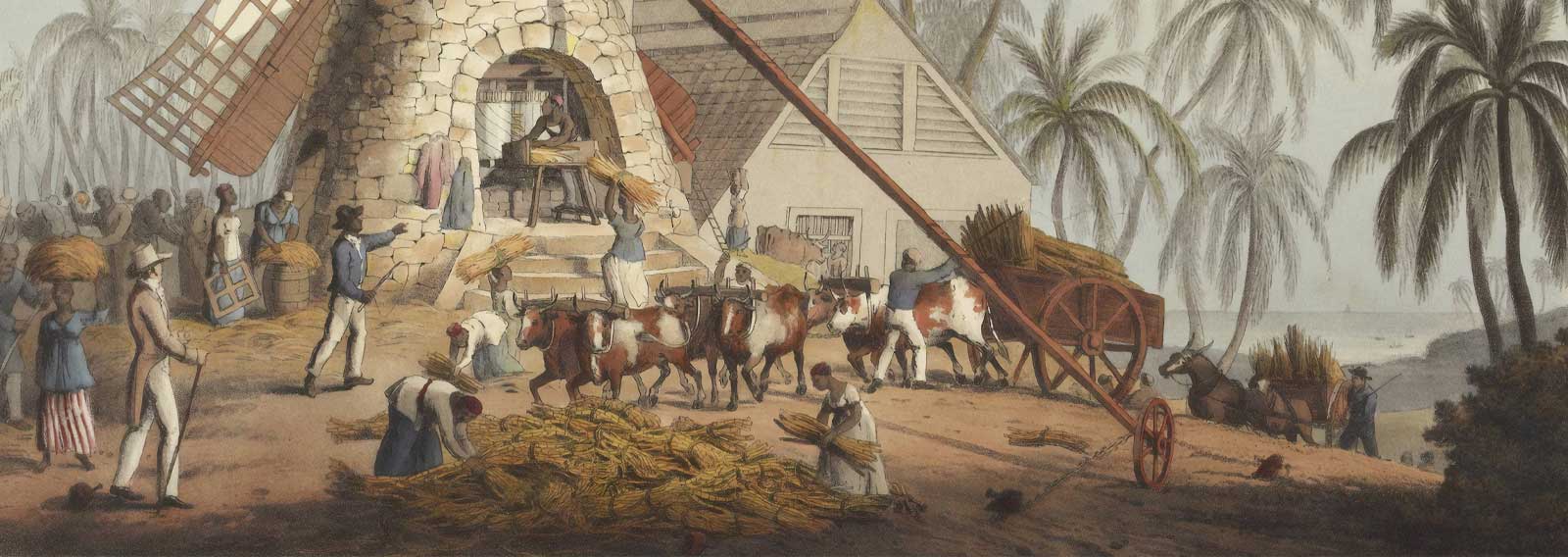One of America’s greatest social and economic commentators is Thomas Sowell. The 93-year-old is the author of over 50 important books, and his intellectual output has been enormous over the past five decades. Sowell – who also happens to be Black – is well-placed to discuss things like race, slavery, reparations and related issues.
Given the hyper-woke culture of ours, and the leftist hegemony that has swept the West, things like slavery are no longer understood factually but ideologically. That is, there are plenty of myths and fallacies surrounding this long-standing social institution.
Neither Sowell nor I of course are seeking to defend slavery, but simply trying to clear the fog and let historical fact and evidence lead the discussion. Sadly most young people today would think that slavery was only the domain of white men during the past few centuries, when the fact is, almost all cultures throughout human history readily made use of slavery. And it was the West that eventually took the lead in seeking to abolish it.
Thus simply sharing some key quotes from Sowell on these matters is a necessary endeavour to help us to think more clearly on this topic. The trouble is, he has written on this so often and in so many columns, interviews, speeches and books, that one is hard-pressed to know where to begin. But let me try.
I will do so by pulling just five (of many) Sowell volumes from my shelves and offering a few choice quotes. I begin with his earlier works and move through to his newer volumes. But before turning to those books, I present one introductory comment from a 2014 newspaper column:
Slavery certainly has its place among the horrors of humanity. But our “educators” today, along with the media, present a highly edited segment of the history of slavery. Those who have been through our schools and colleges, or who have seen our movies or television miniseries, may well come away thinking that slavery means white people enslaving black people. But slavery was a worldwide curse for thousands of years, as far back as recorded history goes.
Over all that expanse of time and space, it is very unlikely that most slaves, or most slave owners, were either black or white. Slavery was common among the vast populations in Asia. Slavery was also common among the Polynesians, and the indigenous peoples of the Western Hemisphere enslaved other indigenous peoples before anyone on this side of the Atlantic had ever seen a European. More whites were brought as slaves to North Africa than blacks brought as slaves to the United States or to the 13 colonies from which it was formed. White slaves were still being bought and sold in the Ottoman Empire, decades after blacks were freed in the United States.
Markets and Minorities (Basic Books, 1981)
Slavery has existed for thousands of years, on every continent, with numerous modifications, and encompassing a remarkable range of occupations. Most slaves in the antebellum South worked on cotton plantations, but some were urban slaves, including many skilled artisans. The range even extended to a riverboat captain commanding a crew that included white sailors. In Greek and Roman antiquity, slave occupations extended from the lowliest work to teachers, doctors, and managers of imperial estates. (p. 83)
Race and Culture (Basic Books,1994)
To explain slavery as being a consequence of certain European ideas leading to bondage for Africans is to ignore the glaring fact that slavery extended in time and space far beyond Europeans and Africans, and far beyond those who shared particular European ideas. Nor can a certain crop, such as sugar, be regarded as some kind of key to understanding slavery, even in the Western Hemisphere, where millions of slaves worked on sugarcane plantations in South America and the Caribbean, for other millions toiled in the cotton fields of the southern United States. Worldwide, still more vast numbers of slaves worked in an enormous range of occupations, from the harems and military units of the Middle East to the clove plantations of Zanzibar, the coffee plantations of Yemen, the pearl fisheries of the Red Sea, and in mines from Egypt to Burma, as well as in high government posts in the Ottoman Empire, where enslaved eunuchs especially could acquire fearsome power. (p. 189)
Black Rednecks and White Liberals (Encounter Books, 2005, 2006)
It takes no more research than a trip to almost any public library or college to show the incredibly lopsided coverage of slavery in the United States or in the Western Hemisphere, as compared to the meagre writings on even larger number of Africans enslaved in the Islamic countries of the Middle East and North Africa, not to mention the vast numbers of Europeans also enslaved in centuries past in the Islamic world and within Europe itself. At least a million Europeans were enslaved by North African pirates alone from 1500 to 1800, and some European slaves were still being sold on the auction blocks in Egypt, years after the Emancipation Proclamation freed blacks in the United States. (p. 112)
Contrary to the “myths to live by” created by Alex Haley and others, Africans were by no means the innocents portrayed in Roots, baffled as to why white men were coming in and taking their people away in chains. On the contrary, the region of West Africa from which Kunta Kinte supposedly came was one of the great slave-trading regions of the continent – before, during, and after the white man arrived. It was the Africans who enslaved their fellow Africans, selling some of these slaves to Europeans or to Arabs and keeping others for themselves. Even at the peak of the Atlantic slave trade, Africans retained more slaves for themselves than they sent to the Western Hemisphere. This pattern was not confined to West Africa, from which most slaves were sent to the Western Hemisphere. In East Africa, the Masai were feared slave traders and other African tribes – either alone or in conjunction with Arabs – enslaved their more vulnerable neighbors. (p. 120)
The Thomas Sowell Reader (Basic Books, 2011)
One of the reasons our children do not measure up academically to children in other countries is that so much time is spent in American classrooms twisting our history for ideological reasons….
Of all the tragic facts about the history of slavery, the most astonishing to an American today is that, although slavery was a worldwide institution for thousands of years, nowhere in the world was slavery a controversial issue prior to the 18th century.
People of every race and color were enslaved – and enslaved others. White people were still being bought and sold as slaves in the Ottoman Empire, decades after American blacks were freed.
Everyone hated the idea of being a slave but few had any qualms about enslaving others. Slavery was just not an issue, not even among intellectuals, much less among political leaders, until the 18th century – and then it was an issue only in Western civilization.
Among those who turned against slavery in the 18th century were George Washington, Thomas Jefferson, Patrick Henry and other American leaders. You could research all of the 18th century Africa or Asia or the Middle East without finding any comparable rejection of slavery there. But who is singled out for scathing criticism today? American leaders of the 18th century.
Deciding that slavery was wrong was much easier than deciding what to do with millions of people from another continent, of another race, and without any historical preparation for living as free citizens in a society like that of the United States, where they were 20 percent of the population.
It is clear from the private correspondence of Washington, Jefferson, and many others that their moral rejection of slavery was unambiguous, but the practical question of what to do now had them baffled. That would remain so for more than half a century. (pp. 18-19)
Wealth, Poverty and Politics (Basic Books, 2016)
Despite widespread misconceptions in the United States today that the institution of slavery was based on race, for most of the millennia in which slavery existed around the world, it was based on whoever was vulnerable to enslavement and within striking distance.
Thus Europeans enslaved other Europeans, just as Asians enslaved other Asians and Africans enslaved other Africans, while Polynesians enslaved other Polynesians and the indigenous peoples of the Western Hemisphere enslaved other indigenous peoples of the Western Hemisphere. The very word “slave” derived from the word for Slav — not only in English but also in other European languages, as well as in Arabic — because Slavs were so widely enslaved by fellow Europeans (and others) for centuries before Africans began to be brought in chains to the Western Hemisphere. In ancient Rome, the slaves included thousands of Greeks, as well as Britons, Syrians and Jews. China in centuries past was “one of the largest and most comprehensive markets for the exchange of human beings in the world.” India has been estimated to have had more slaves than that in the entire Western Hemisphere— including children kidnapped by the original Thugs. In some of the cities of Southeast Asia, slaves were a majority of the population….
The economic consequences of slavery, both during its existence and in its aftermath, have been a matter of controversy among scholars. However, some of the more extravagant claims— that slavery was the basis for the prosperity of the United States, or of Western civilization in general— are clearly false. The American South, where slavery was concentrated, was for centuries the poorest and most backward region of the country, for its white population as well as for its black population. In Brazil, where slavery was concentrated in that country’s northern region, this too was and remained, the poorest region. Brazil’s industrial development was concentrated in its southern region and was largely the work of immigrants, most of whom arrived after the abolition of slavery. Similarly, it was in the era after slavery was abolished that the United States rose to become the leading industrial power in the world— and here, too, this dramatic economic rise took place primarily outside the region where slavery had been concentrated.
Perhaps the most sweeping claim for the supposed economic effects of slavery is that the profits of slavery financed Britain’s industrial revolution. But even if all of Britain’s profits from slavery had been invested in its industry, that would have come to less than 2 percent of Britain’s domestic investments during that era.
Despite attempts to depict slavery as a localized evil, inflicted on one race by another, it was a vastly larger evil, inflicted on peoples around the world. As an internationally recognized historian of slavery, David Eltis put it: “Slavery until recently was universal in two senses. Most settled societies incorporated the institution into their social structures, and few peoples in the world have not constituted a major source of slaves at one time or another.”
To say that American society is illegitimate today because it had slavery when it was founded would be to say that virtually every nation around the world— whether of black, white or other races— was illegitimate at that same time, which hardly seems to be what critics are trying to suggest. At some period of their history, as John Stuart Mill put it, “almost every people, now civilized, have consisted, in majority, of slaves.”
While societies around the world had slavery, Western civilization was the first to turn against slavery, ending it within Western societies during the nineteenth century, with Brazil being the last Western nation to abolish slavery in 1888. Many non-Western societies then had slavery stamped out within them by Western nations that took over those societies during the era of European imperialism. But elsewhere vestiges of slavery persisted on into the late twentieth century and early twenty-first century, especially in parts of the Middle East and Africa. (pp. 233-236)




















